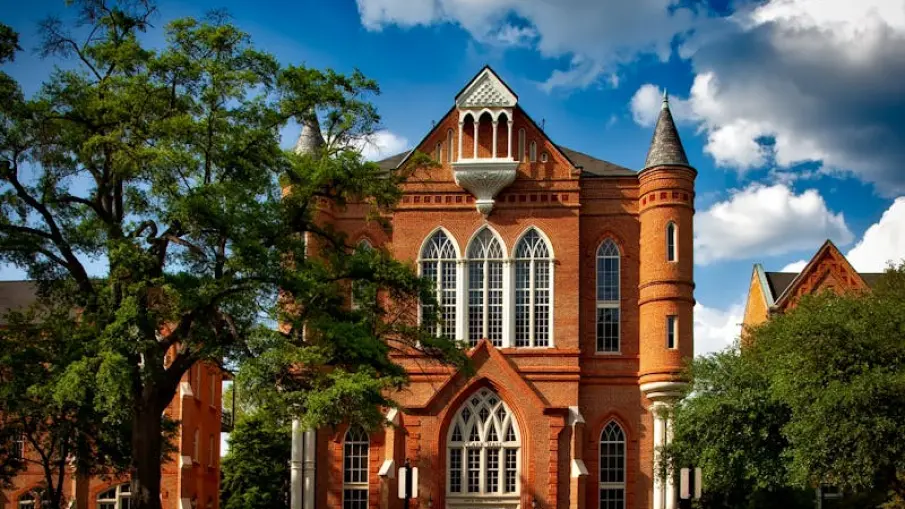Alabama’s Architectural Heritage and Home Sales
Alabama’s rich history is reflected in its diverse and iconic architectural styles. From the grand antebellum homes to modern developments, the state’s architectural heritage offers something unique for every homeowner or real estate investor. As the housing market in Alabama continues to grow, buyers and sellers alike are finding value not only in the functionality of homes but also in the stories they tell through their designs. Understanding the state’s architectural past provides crucial insights into the current trends and future possibilities of home sales.

The Influence of Antebellum Architecture
One of the most notable architectural styles in Alabama is the antebellum architecture, a symbol of the pre-Civil War era. Defined by grand, columned facades and sprawling plantations, these homes often evoke the Southern charm many associate with the state. Antebellum homes are typically constructed with symmetry, expansive porches, and intricate interior designs. While these properties are rare today, their presence on the real estate market can command premium prices due to their historic significance.
Homebuyers are increasingly seeking homes with unique histories, and the demand for antebellum properties reflects a broader trend in real estate where the story behind a house adds value. For sellers, highlighting the historical elements of such homes can enhance their market appeal, making them attractive to a niche audience of history enthusiasts and preservationists. However, maintaining these homes often requires significant upkeep, a factor buyers must weigh when considering these heritage properties.
Victorian and Craftsman Influence in Urban Areas
As Alabama evolved through the late 19th and early 20th centuries, Victorian and Craftsman-style homes became popular, especially in urban centers such as Birmingham and Mobile. These styles introduced more intricate detailing and craftsmanship compared to earlier architectural trends. Victorian homes, with their ornate woodwork and multi-gabled roofs, appeal to buyers who appreciate fine detailing and historical significance. Craftsman-style homes, with their simpler lines and emphasis on handcrafted elements, offer a cozy, lived-in feel that many modern buyers find appealing.
For sellers in Alabama, highlighting these architectural features can create a competitive edge. Buyers who are drawn to urban areas often value the distinctiveness of these homes over newer, cookie-cutter developments. Moreover, real estate agents and developers are seeing an increased demand for restoring these homes while preserving their architectural integrity, making them even more desirable in today’s market.
Mid-Century Modern Homes: A Growing Trend
While historical homes hold their charm, mid-century modern architecture is another style gaining momentum in Alabama’s real estate market. Characterized by clean lines, large windows, and open floor plans, mid-century modern homes cater to buyers seeking a blend of simplicity and modernity. These homes emerged in the mid-20th century as a response to the industrial era's innovations in building materials and technologies.
Mid-century homes in Alabama offer a stark contrast to the more traditional designs of earlier eras, and their minimalist aesthetic resonates with younger homebuyers. Cities like Huntsville and Montgomery are home to many mid-century modern properties that combine form and function, providing the ideal setting for both families and single professionals. Real estate buyers seeking mid-century homes may find assistance through services like Hapa Homebuyers, which specialize in identifying unique properties across the state.
The Revival of Southern Cottage Architecture
Alabama’s architectural heritage also includes the Southern cottage, a smaller, more affordable option that gained popularity in the early 20th century. These homes typically feature modest front porches, gabled roofs, and simple floor plans. Unlike the grand antebellum estates or ornate Victorian homes, Southern cottages focus on functionality and comfort.
In the current housing market, Southern cottages are attracting a new wave of buyers who value simplicity, affordability, and community living. Sellers of these properties are benefiting from an increase in demand from first-time buyers and retirees seeking a low-maintenance lifestyle. Furthermore, the revival of interest in Southern cottages demonstrates a broader trend of returning to classic, yet unpretentious, architectural designs that promote energy efficiency and modern amenities.
How Alabama’s Architecture Affects Home Sales
The architectural diversity of Alabama plays a significant role in shaping the state’s home sales. Each style of home, whether an antebellum mansion or a modest Craftsman, appeals to different demographics. For sellers, understanding the type of buyers interested in particular architectural styles can help in marketing the property more effectively. Historic homes, for example, may require specific restoration efforts, but they can attract buyers willing to invest in preserving the cultural heritage.
Additionally, location plays a crucial role in the appeal of Alabama’s various architectural designs. Homes in urban areas such as Birmingham, Montgomery, and Mobile are likely to appeal to professionals and young families, while rural areas with sprawling estates attract those looking for peace and seclusion. Sellers and agents who can identify the architectural features that resonate with buyers in their region will have the upper hand in marketing properties successfully.
Balancing Tradition with Modern Innovation
As Alabama’s real estate market evolves, there is a growing need to balance the state’s architectural heritage with modern innovations. Buyers are increasingly seeking homes that offer a fusion of traditional charm and contemporary amenities. This trend is particularly evident in new developments that incorporate elements of Southern architecture while embracing energy efficiency and smart-home technology. For sellers, showcasing these updates alongside historical details can significantly increase a home’s market value.
Alabama’s rich architectural history is not just a reflection of its past but a driving force in its real estate market today. From antebellum estates to modern, minimalist designs, the state offers a wide range of options for both buyers and sellers. By understanding the architectural heritage and the unique value it brings, home sellers can better position their properties, while buyers can find homes that align with both their aesthetic and functional needs. As Alabama continues to grow, its architectural legacy will remain a key player in shaping the state’s vibrant real estate landscape.
More to Read:
Previous Posts:

